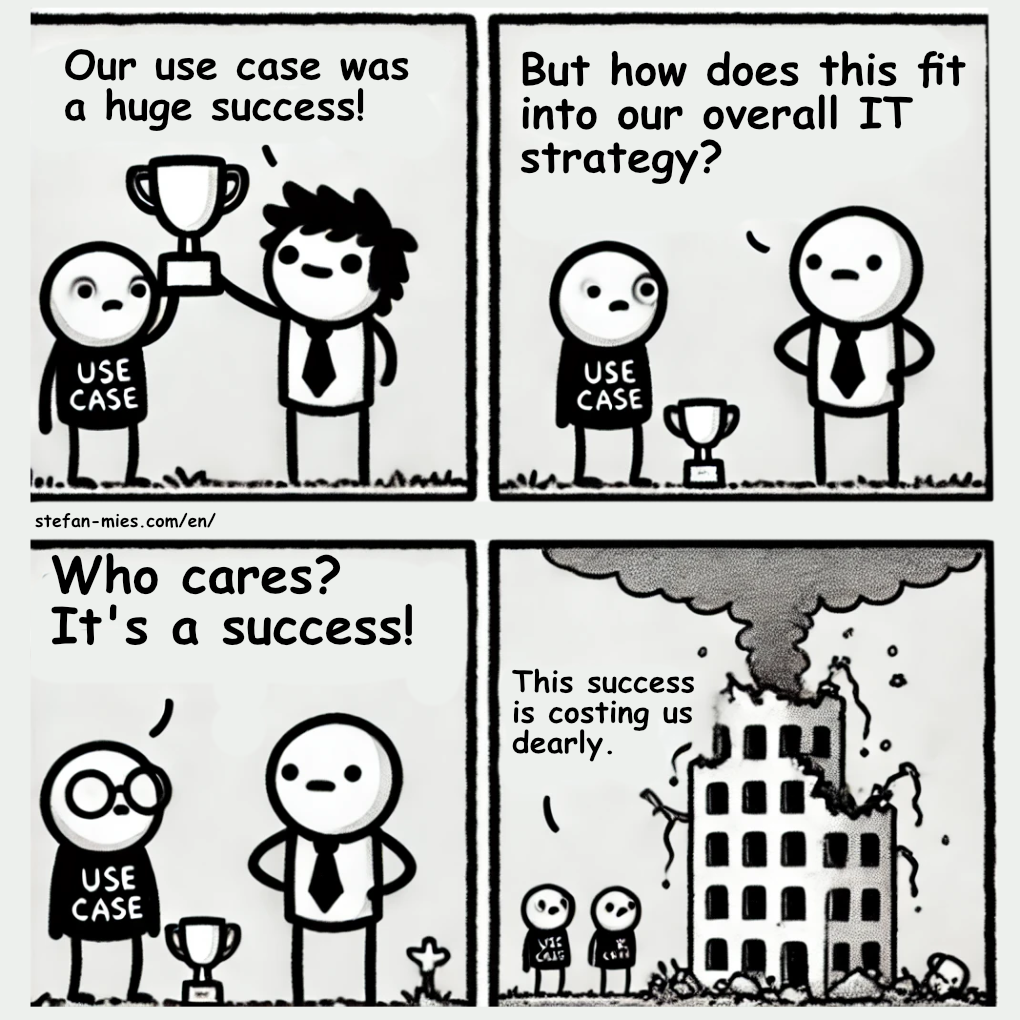
When introducing an enterprise architecture for data and analytics, there are two main approaches – the holistic approach and the use case-based approach. While the use case-based approach offers quick solutions for specific requirements, it also has significant disadvantages. One disadvantage is the lack of economies of scale, as isolated use case solutions prevent synergy effects and lead to higher implementation and operating costs. Another disadvantage is the missed economies of scope, as without a holistic data and analytics strategy, the potential for reusing technologies and processes is not realized, resulting in redundant solutions and increased maintenance costs. Additionally, a focus on isolated use cases can lead to uncoordinated IT investments, increased IT costs, and a lack of cross-functional expertise among employees.
On the other hand, a holistic approach that incorporates the entire IT and data strategy, as well as the company’s objectives, can mitigate these disadvantages. By working closely with the CIO department and integrating it into the overall IT and data strategy, economies of scale can be exploited and IT costs optimized. Furthermore, a holistic approach allows for the expansion of knowledge across departments, strengthening the flexibility and innovative power of the company.
In conclusion, choosing the right approach for the Data & Analytics Enterprise Architecture is crucial for the long-term success of the IT and data strategy. A holistic approach that ensures collaboration and alignment with all relevant stakeholders is the best way to ensure efficiency, cost control, and innovation. It allows for the exploitation of economies of scale and scope, optimizes IT costs, and promotes cross-functional expertise among employees. By involving the CIO department and considering the overall IT and data strategy, a unified vision and direction can be achieved, preventing inconsistencies and conflicts within the IT and data landscape. Ultimately, a holistic approach enables organizations to reap the benefits of a well-planned and coordinated data and analytics strategy.